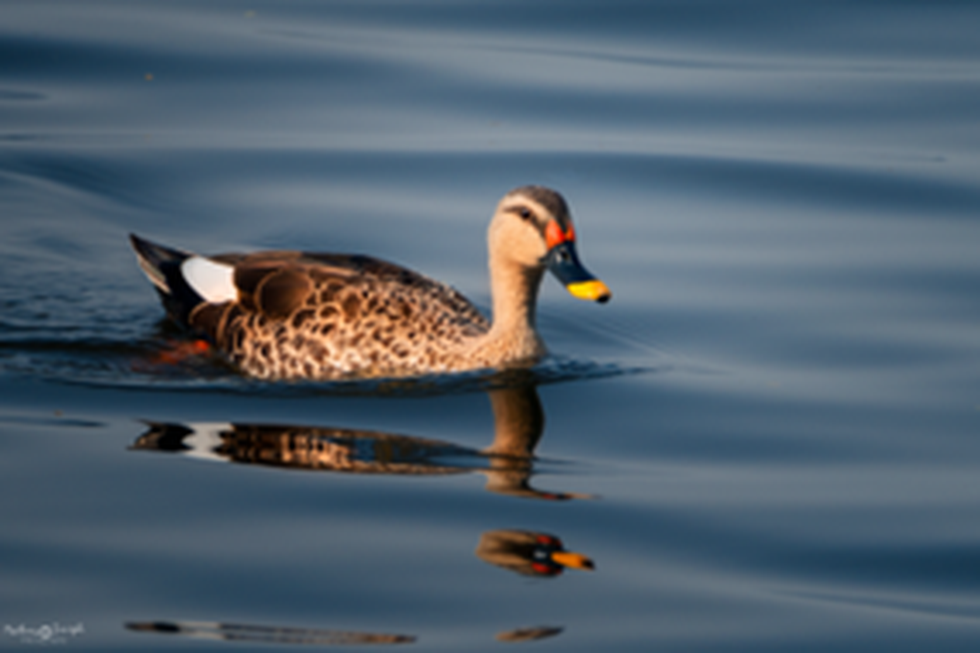About Indian-Spot Billed Duck:
- It is a large dabbling duck that is a non-migratory breeding duck throughout freshwater wetlands in the Indian subcontinent.
- The name is derived from the red spot at the base of the bill that is found in the mainland Indian population.
- Scientific Name: Anas poecilorhyncha
- Distribution and Habitat:
- It is a resident throughout Pakistan and India in freshwater wetlands.
- They inhabit both inland and coastal wetlands such as ponds, lakes, pools, streams, creeks, estuaries, tidal flats and marshes.
- They tend to avoid very large patches of open water and prefer medium-sized wetlands with vegetation cover.
- Features:
- It has a scaly patterned body with a green speculum and a band of white tertials.
- It measures 55–63 cm in length and 83–95 cm across the wings, with a body mass of 790–1,500 g. Males are larger than females.
- These are mainly grey ducks with a paler head and neck and a black bill tipped bright yellow.
- The wings are whitish with black flight feathers below, and from above show a white-bordered green.
- The legs and feet are bright orange to coral red. Juveniles are browner and duller than adults.
- Feeding Habits: They mostly feed on grasses and other vegetations. Sometimes they may feed on insects.
- Conservation Status:
- IUCN Red List: Least Concern
